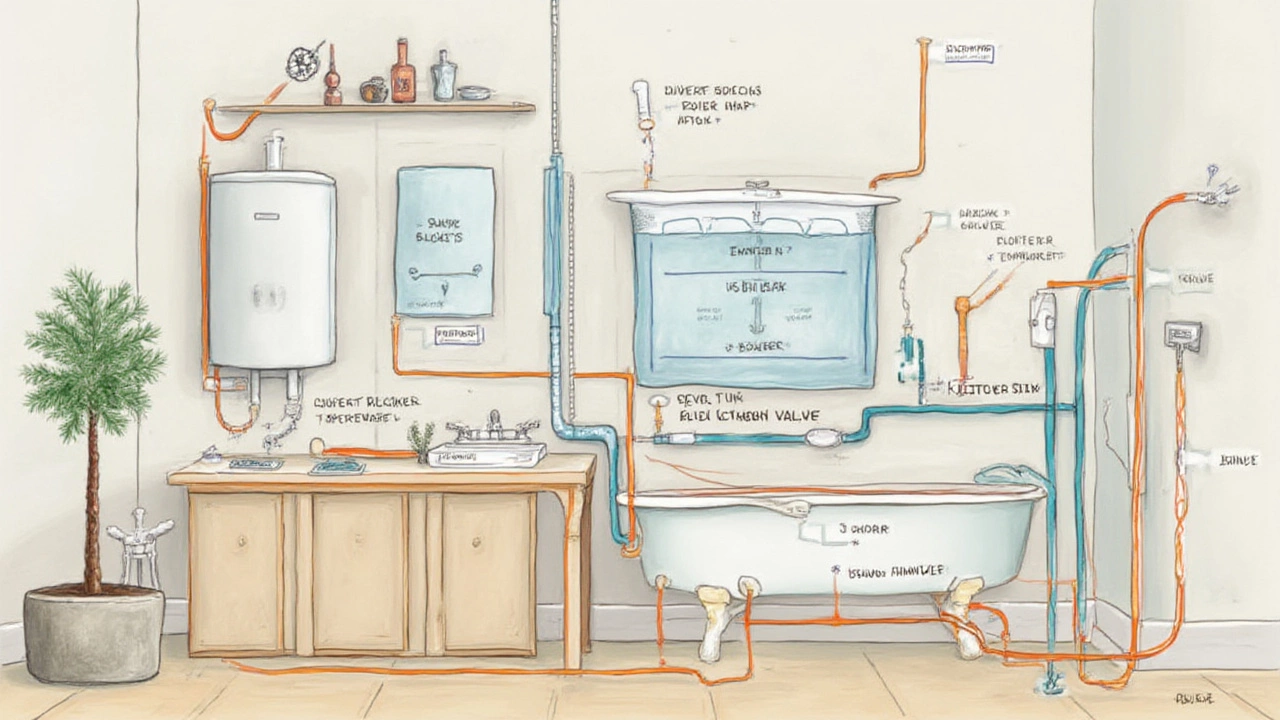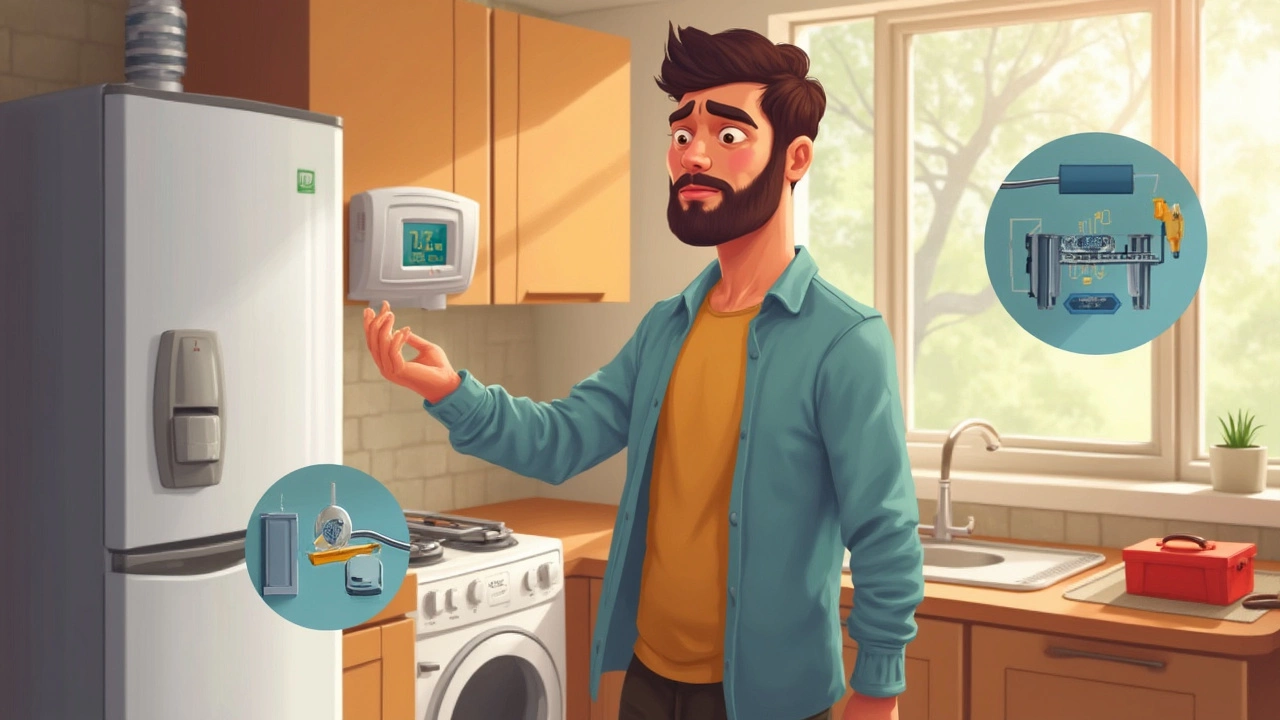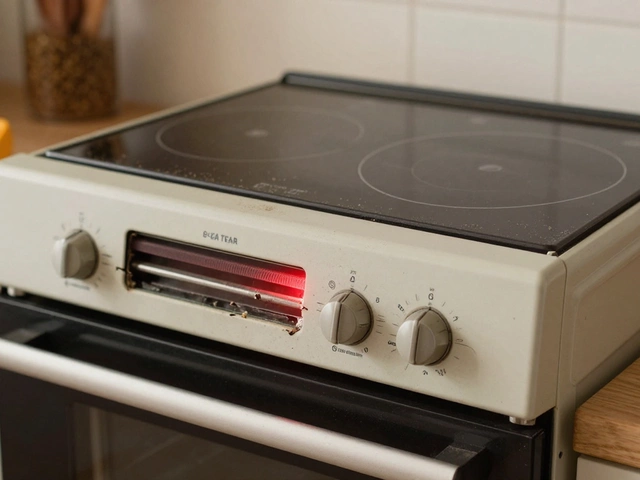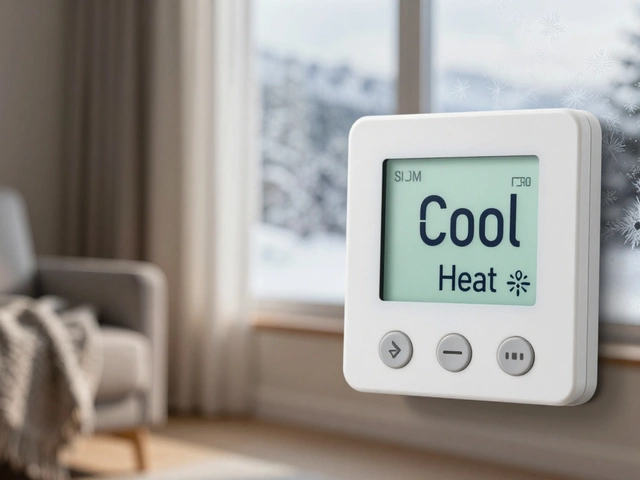Picture this: you’re craving a long, hot shower after a rough day—your muscles ache, you’re half-awake, and you need that steamy comfort. You turn on the faucet expecting warmth, but instead, you get a polar plunge while your bathroom sink blasts out hot water just fine. If you’ve been there, you’re not alone. I’ve fielded this exact complaint from friends, and even my wife Laura glared at me one morning when the shower turned arctic but her sink was running lava-hot. It seems like a weird, almost unfair plumbing glitch, but there’s logic hiding under your tiles and pipes.
The Mystery: Why Does Your Sink Have Hot Water but Your Shower Doesn’t?
If you get hot water from the sink but ice water from the shower, your mind jumps straight to the water heater. Most folks do. But the real answer is sneakier. The sink and shower usually share the same water supply and, in most homes, the same water heater. Since your sink heats up, this means your water heater is pulling its weight. So what’s going wrong in the line to your shower?
Your house’s plumbing splits off after the water heater—pipes snake off in different directions, including to your bathroom fixtures. Clogs, worn-out parts, or even a shower valve gone rogue can wreck the shower’s invitation to the hot water party. Modern mixers or anti-scald devices in showers sometimes trip up, too. And if you live in a place with hard water—hello, London and Los Angeles—limescale builds up stubbornly, silently choking off flow little by little.
The not-so-fun fact? Plumbers find blocked shower cartridges or temperamental mixing valves are behind most "hot water in the sink but not the shower" calls. In a study by HomeServe UK in 2023, about 37% of calls for water temperature troubles ended up being shower valve issues, not water heater failures. Cool, right? Or maybe frustrating, depending on whether you’ve already bought a new heater thinking it was at fault.
Separate line leakage, crimped pipes during renovations, and temperature-limiter settings on thermostatic shower valves also pop up as surprise culprits. It’s rarely just a “simple” fix—though, sometimes, a few twists of a screwdriver go a long way.
How Your Shower Plumbing Works: The Bits That Cause Problems
Your bathroom’s plumbing isn’t as simple as two pipes. Behind the scenes, your shower has extra equipment, safety bits, and controls your sink does not. Showers often rely on a mixing valve: this device blends hot and cold water so your skin doesn’t get scalded or frozen when you turn the dial.
If your shower water disappears but the sink stays steaming, chances are the mixing valve is stuck, jammed, or clogged with debris. There’s a little-known safety feature buried in many new showers: anti-scald or pressure-balancing devices. These guys trip if there’s a weird pressure drop (say, someone starts the dishwasher or flushes a toilet) and might not reset properly, especially if mineral gunk (such as calcium) builds up around them.
In some cases, cartridge-style valves inside your shower’s controller go bad. They can seize up entirely or get jammed half-open, especially if the cartridge’s rubber parts are ancient. Sometimes, a plumber can clean it out and everything’s back to normal. Sometimes, you’re heading to the hardware store for a replacement. And believe me, I’ve spent weekends elbows-deep in my own wall for this very reason.
Let’s not forget the rare, sneaky causes. For example, suppose you have an older home that’s been remodeled a few too many times. Sometimes, when pipes are rerouted, the hot water line to the shower can run across uninsulated parts of your house and lose a ton of heat before it arrives. Or, a kinked pipe behind drywall restricts hot water flow just enough to keep your showers cold but doesn’t affect the sink’s short, straight run.
This tangle of valves and gadgets has a silver lining: once you know where to look, finding the weak link is much easier. Here’s a nugget: about 64% of UK households with hard water have faster buildup of limescale, according to Thames Water’s 2022 consumer report. Limescale can collect anywhere, but valves are its favorite parking spot.
Simple Checks: How to Quickly Diagnose the Problem
You don’t need to be a plumbing genius to spot the difference between a failed water heater and a shower-specific meltdown. The place to start is comparing all your hot taps.
- First, check if you get hot water at all other sinks and washing machines in the house. If they all work, it’s not your water heater causing mischief.
- Next, try running the shower and sink at the same time. Does the shower ever warm up after a few minutes? If so, low flow or a partially blocked valve might be slowing it down.
- Check your shower’s mixing valve setting. Sometimes, the anti-scald device gets bumped or knocks out of position. Removing the handle and inspecting the valve can reveal if this has occurred.
- If your shower uses a diverter (the lever or knob to switch between bath tap and showerhead), cycle it a few times. Stuck diverters sometimes block only one pathway.
You can also touch the plumbing (safely, please) just before it enters the shower. If the pipe feels hot but the shower stays cold, the issue is probably right at the valve or showerhead.
Got a removable showerhead? Unscrew it and run water through the hose. If you suddenly feel hot water, the showerhead could be clogged with mineral deposits, not letting the hot water through.
Still nothing? Here’s a data tidbit: In a recent poll by Angie’s List, about 47% of homeowners believed broken heaters were to blame for hot water issues, but only 18% had true heater problems. Most had local plumbing defects—goes to show why quick checks can save you unnecessary expenses.

Common Causes: Shower Defects, Hard Water, and Beyond
Once you’ve narrowed the problem to the shower itself, you’re looking at a few usual suspects. The mixing valve and cartridge gum up from debris, minerals, or even chunks of old rubber gasket. Hard water zones? Expect shower problems every couple of years if you don’t flush or descale your fixtures.
Anti-scald devices often get overlooked. These are little sleeves or discs hiding inside the valve to keep water from getting too hot. But if dirt or corrosion jams them, they may stop hot water flow entirely. Some anti-scald technology can be "reset" with a quick twist, though others need a full cleaning or swap-out.
Clogs can be even sneakier. I once found a bit of old Teflon tape sitting in our shower valve, left behind after a quick DIY fix years before. Never underestimate how even the tiniest mud or tape scrap can mess up your temp.
If you’re in an apartment or older home, sometimes two units share plumbing lines. If your shower is cold but your neighbor’s faucet is hot, timing your showers to avoid low pressure windows might be a surprise workaround. Buildings with pressure balancing issues or old plumbing layouts can show this weird act: hot water everywhere but the shower, which sits at the end of a needy pipeline.
Table: Common Causes and Quick Fixes
| Cause | Symptom | Fix |
|---|---|---|
| Clogged shower cartridge | No hot water in shower, normal in sinks | Remove and clean or replace cartridge |
| Broken mixing valve | Cold or lukewarm water, showers only | Replace mixing valve |
| Anti-scald device setting | Water never gets hot enough | Adjust/reset device per manual |
| Limescale/mineral blockage | Low flow, temperature fluctuation | Descale with vinegar or descaler |
| Faulty diverter | Showerhead runs cold, bath is hot | Repair or replace diverter |
| Pipe issues/kinks | Hot water doesn’t reach shower | Inspect and fix—may need plumber |
Now, if you haven’t installed a water softener yet and you’re in a mineral-heavy area, you’ll see this every few years. That’s why plumbing manufacturers push for regular cleaning—many recommend cleaning valves every 6-12 months if you notice water quality issues or odd smells from old pipes.
DIY Repair or Call a Pro? Fixing Your Hot Water Shower Issue
Confident with a wrench? Some shower problems are pretty doable to fix on your own. For a basic cartridge clean, most showers have a little screw hiding under a cap in the handle. Shut off both hot and cold supply lines first—no one wants an accidental Niagara Falls in the bathroom.
- Pry off the handle (sometimes hidden screws are under caps; poke gently with a flathead screwdriver).
- Remove the escutcheon plate (the flat plate behind the handle)—this usually unscrews by hand or requires a Phillips screwdriver.
- Look for a clip or nut holding the cartridge or mixing valve. Slide out the cartridge (needle-nose pliers help).
- Clean the cartridge with vinegar to dissolve hard water deposits, or swap in a replacement if it’s worn.
- Reassemble everything in reverse order, double-checking seals and gaskets for wear.
If you’re dealing with an anti-scald device, the fix can be as simple as rotating the limiter disc. Just check your shower’s model manual for exact steps—these gadgets love to hide behind handles and dials.
Caught a whiff of rotten egg smell from your pipes while poking around? That’s usually hydrogen sulfide, hinting at a water heater issue or old pipes. If so, bring in a pro—bacteria can do a real number on plumbing.
Bigger jobs—pipe leaks behind the wall, corrosion, or pressure imbalance—are best left to professionals, especially if you don’t want to discover drywall dust in your breakfast cereal. According to the National Association of Home Builders, about 1 in 3 plumbing calls in urban homes trace back to DIY “repairs” gone sideways, which reinforces the wisdom of knowing your limits.
If you’ve tried everything, and the problem’s still haunting your mornings, don’t just swap out your water heater. Call a qualified plumber who can pressure-test your lines and scope out hidden gremlins inside the wall. It usually saves stress, especially if you value your weekend.
Pro Tips for Keeping Hot Water Flowing in Your Shower
No one likes cold surprises in the bathroom, so keeping your shower happy takes a bit of planning. Here are some reality-tested tips to keep your hot water flowing where it’s supposed to:
- Inspect and clean shower valves every six months—don’t skip it, even if things “seem fine.”
- If you live in a hard water region (with visible limescale buildup), install a water softener or filter. It’ll save your plumbing, not just your shower.
- Always check your shower’s anti-scald or pressure balance devices after plumbing work is done; they can get knocked loose easily.
- Flush your water heater at least once a year, especially if you’ve got sediment buildup. Even if your shower isn’t suffering, your heater will thank you.
- Set your water heater temperature to 49°C (120°F)—hot enough to kill bacteria and deliver warmth, not so hot you need a warning sign for the kids.
If you’re ever out shopping for bathroom gear, high-quality brass or ceramic valve cartridges are worth the few extra pounds or dollars. They outlast the cheaper plastic versions by years. The whole “buy cheap, buy twice” law applies here more than anywhere else in the home.
And here’s a fun fact: According to a 2024 HomeServe poll, almost 58% of homeowners said they’d fixed minor water flow or valve issues themselves after watching a couple of online tutorials. So, don’t let plumbing gobbledygook scare you—you’ve got this. Or if you don’t, you’ve got a plumber’s number ready. Either way, your morning hot shower is on its way back—hopefully before breakfast gets cold.




